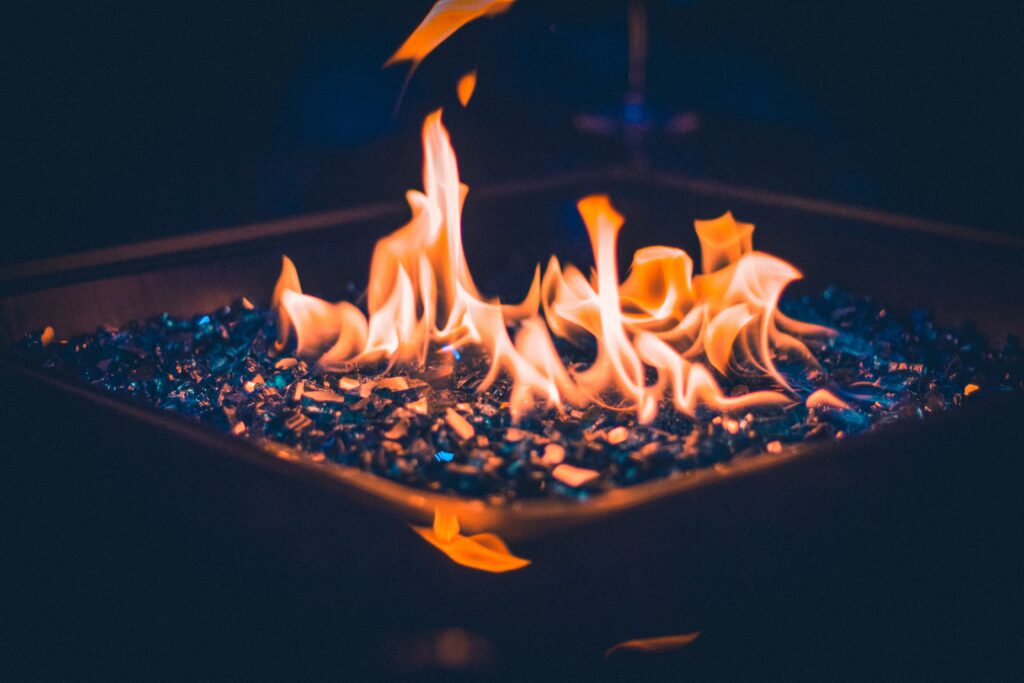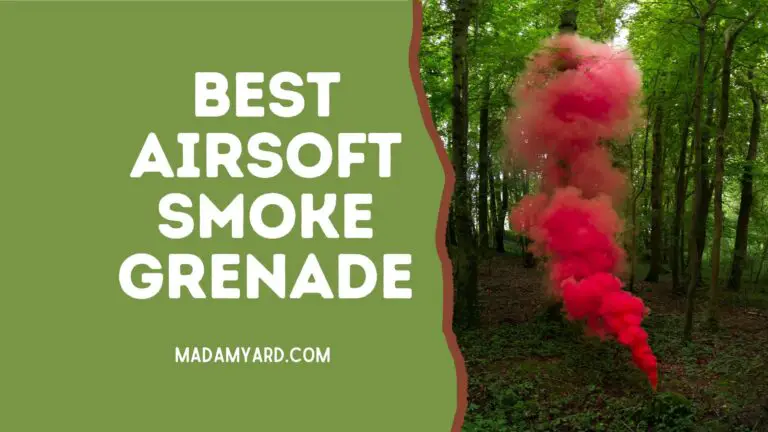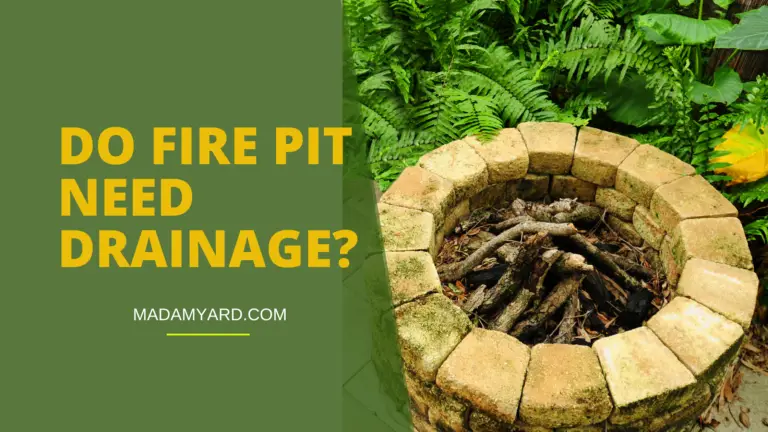The Best Thing To Put In Bottom Of Fire Pit
The idea of constructing a fire pit in your backyard or garden is a fantastic option to create a relaxing outdoor space.
However, you must be aware that constructing the fire pit isn’t easy. Various factors must be considered, and it’s crucial to take note of every aspect of the installation.
Making a fire pit out of stone might seem like a great idea, and it can be the perfect place for your entire group of family and friends to relax on cold nights. While a fire pit with a stone design is a fantastic idea, it is essential to realize that making one isn’t as straightforward as you imagine.
While a fire pit made from stone is a better choice than a traditional stove, you must be aware that making one requires a bit of knowledge. If you’re the first time creating a fire pit, it is essential to know what materials to select will play a crucial role.

What to Put In Bottom Of Fire Pit?
Here is the thing to put on the bottom of your fire pit.
1. Sand

Sand is widely regarded as one of the most flexible materials for the bottom of fire pits, as it is inexpensive, simple to install, and provides a good heat barrier. It can absorb heat and distributes it evenly throughout the pit.
The metal bowl is protected by sand from the intense heat that the fire can produce. Sand at the bottom of your wood fire has one minor drawback. When ash mixes with sand, it forms a slush that must be removed to clean. After removing the old sand, you’ll need to replace it with new sand.
2. Gravel
Another option available to you is gravel, and it is an excellent choice since it is readily accessible. If you own an outdoor fire pit and require an affordable option to consider, you must think about making use of this.
If you do not want to be extremely particular regarding the gravel you use, it is best to place enough in to fill in 10% of your pit.
This gravel will make sure that the fire pit is working correctly. You can always put the fire pit back in later. However, one crucial thing you must be aware of with gravel is that it’s not made to be used at high temperatures, especially when you look at other materials like sand.
So, the most effective option is to use materials specifically designed to work with gravel.
3. Dirt
Dirt is a great alternative for the bottom of fire pits because it is free, easy to use, and heat resistant. The only major disadvantage of soil is that ash can combine with it to form a horrible muck that, if wet, can turn into a natural disaster.
It’s not difficult to clean if you have a shovel to dig it out and start over with. If you’re using dirt, be prepared to spend a little more time maintaining it.
If you’re not sure whether or not to use sand in the bottom of your pit, refer to the user manual.
4. Lava Rocks
Lava rocks were created expressly for use at the bottom of fire pits. They’re not only attractive, but they’re also extremely heat-resistant.
You don’t have to worry about them cracking, fracturing, or exploding like other stones. If lava rocks haven’t detonated before, they’re unlikely to do so in your fire pit.
They’re usually made of obsidian, which is formed by magma. Unless you have a gas fire pit, it may require more care.
5. Fire Pit Glass

Fire pit glass is a highly durable manufactured substance in various colors and designs. Although firepit glass may not radiate heat and lava rocks and is more expensive than sand and dirt, it can provide a spectacular light show as the flames dance in the reflection of the glass.
Safety Tips for Fire Pits
In any case, a fire, no matter how small, is a very dangerous thing, and you must be cautious with it; else, it may have some unintended consequences that you do not want to occur.
Let’s go over some fire pit safety recommendations to assist you in avoiding such mishaps and making your experience safer.
1. Make Water Easily Accessible
Before you even light the fire, you must have some water surrounding the fire pit. That way, if things go out of hand, you’ll be able to put out the fire.
You may believe that the fire from the pit poses no danger. A mere spark of flame, on the other hand, might result in deadly mishaps.
That is why it is critical to keep some water nearby the fire pit that you can easily access. You can have a bucket or a large bottle full of water by your side, and that’s going to suffice.
2. Fire Pit Location
You need to choose the best location for the fire pit, and it must be located at least 15 feet away from residential areas, buildings, or car parking areas. Also, make sure that there are no trees nearby the fire pits.
3. Monitor The Fire
You should be aware that fire can get out of control in a couple of seconds. As a result, you must constantly check the fire pit’s flame at all times.
4. Completely Douse The Fire
Make sure to put out the fire after finishing. Don’t leave the spot with the fire pit still on. Just throw water into the pit, and the fire will stop.
Types of Fire Pits
There are numerous benefits to having a fire pit in your backyard. It will add value to your property and increase the usage of your backyard landscaping, in addition to providing hours of cozy fun with family and friends.
If you can’t decide whether you want a wood or gas fire pit, consider a dual-fuel fire bowl, which can burn both gas and wood. They are more expensive to manufacture and necessitate a more sophisticated structure. Also, you have to know what fuel you are using will affect how hot the fire pits get
Instead of a smaller fire pit, opt for a larger one. Leaving extra space allows you to upgrade furniture or pull up some extra chairs when guests arrive.
Be aware of the costs. Fire pits can be quite expensive, especially when complex and constructed by a contractor. However, portable fire pits typically cost below $300.
1. Metal Fire Pit
You can evenly distribute the heat from a burning fire by putting an inch or two of sand on the bottom of your metal pit. Do not use a liner in a metal fire pit – the metal does the job just fine.
If you are concerned about heat transfer, you can always use a heat shield or fire mat.
2. Gas Fire Pit
Gas fire pits are among the most popular fire pits. It’s simple and uncomplicated to use. However, it would help if you exercise caution regarding the materials. You must properly place materials such as magma lava stones, sand, or fire glasses.
You won’t create a meaningful fire in the fire pit unless you do this. Just make sure the materials don’t obstruct the ignitor, and you’ll be OK.
3. Fixed Or Portable Fire Pit
Decide how portable you want your fire pit to be after brainstorming fire pit ideas. A conventional in-ground fire pit is great if you want a permanent fixture.
When installing an inground fire pit, it is normally advised that you dig down six to 12 inches. Before applying a filler layer, make sure the ground is as level as possible.
If you’re excavating deeper, ensure adequate ventilation for the fire to burn properly. You may need to use a fire bowl on top of your masonry to keep the fire high.
Higher fire pit walls are especially useful if you have little children or pets that need to be kept safe from the flames. You can buy a pre-built portable fire pit or a fire table if you want a portable fire pit.
Also, you can choose a smokeless fire pit if you prefer a fire pit without so much smoke.







